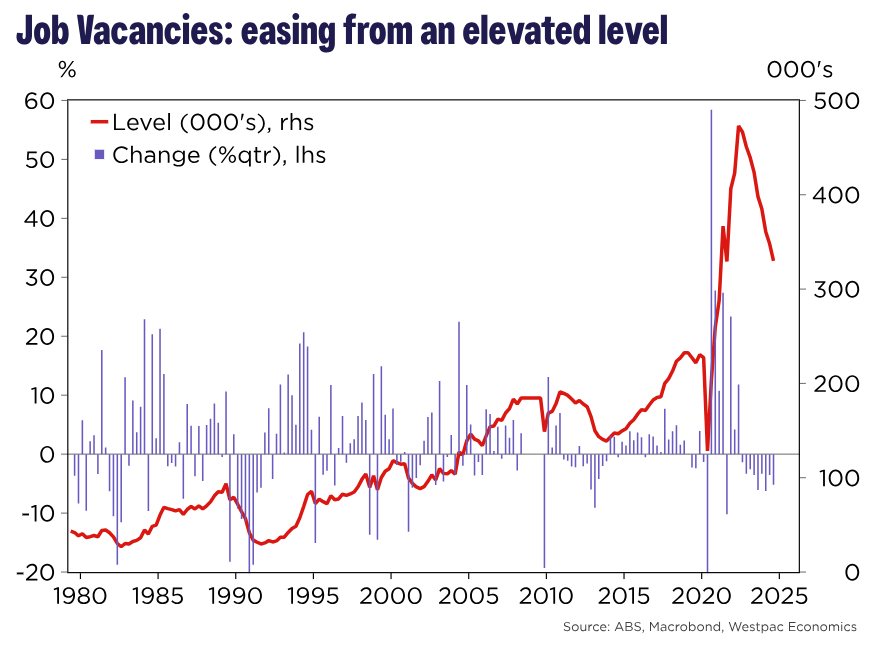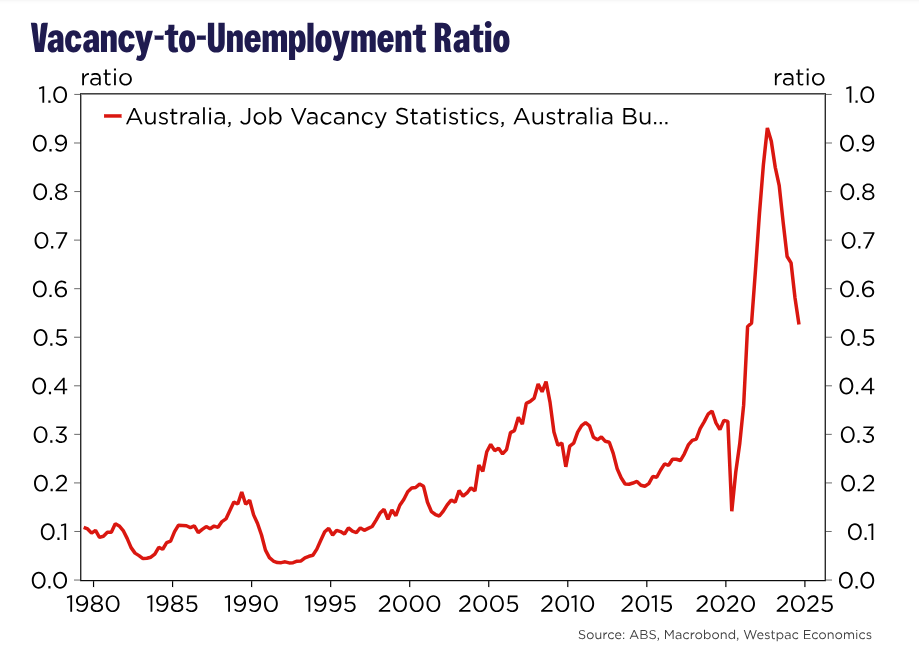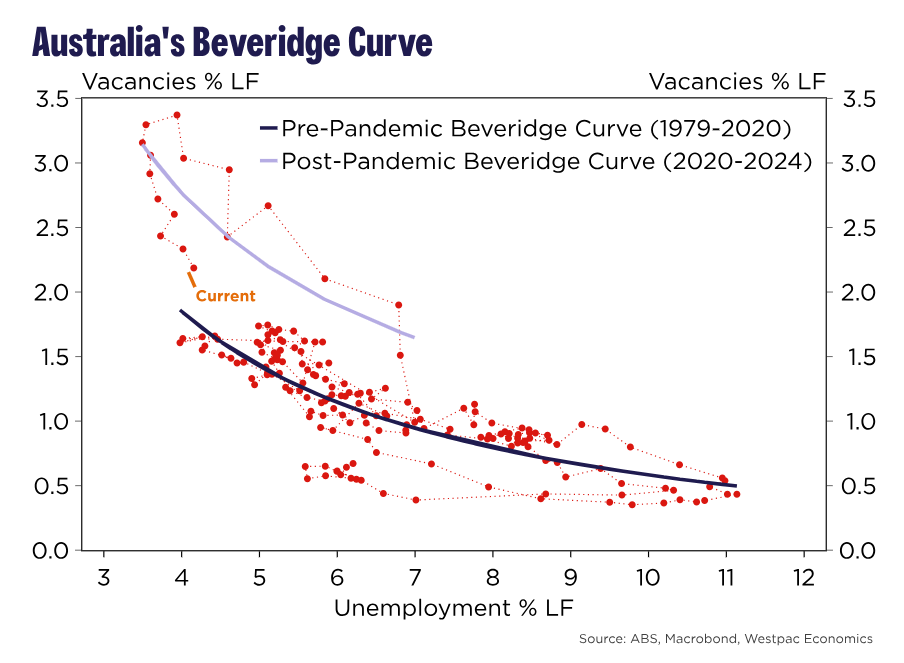

Job vacancies in Australia have continued their downward trend, dropping by 5.2% between May and August from 348,000 to 329,900.
 Both private and public sectors experienced declines, with the public sector seeing its sharpest quarterly drop since the pandemic began, down 7.5%.
Both private and public sectors experienced declines, with the public sector seeing its sharpest quarterly drop since the pandemic began, down 7.5%.
“Job vacancies have now edged lower for nine consecutive quarters and are 30.3% lower than their peak in May 2022,” said Neha Sharma (pictured above), economist at Westpac.
Despite these declines, job vacancies are still significantly higher than their pre-COVID average of around 180,000.
Recent ABS data suggest a gradual easing in labour market conditions, though the market remains tight by historical standards.
The vacancy-to-unemployment ratio, a key measure of labour market slack closely watched by the RBA, eased from 0.58 in May to 0.53 in August.

Although down from its 2022 peak of 0.93, the ratio remains well above its long-term average of 0.2.
The latest data release “coupled with last week’s labour force survey, is unlikely to materially alter the RBA’s assessment on labour market conditions: ‘that the labour market is still tight relative to full employment’ and conditions are only gradually softening,” Sharma said.
The decline in job vacancies has been broad-based, affecting nearly all industries over the past year except for rental, hiring, and real estate services, which saw a slight increase of 0.2% year-over-year.
The most significant declines were observed in manufacturing, retail trade, and arts and recreation – sectors that are heavily impacted by reduced discretionary spending.
However, compared to pre-COVID levels, many industries still reported elevated vacancies, particularly in health care and social services, which remain more than double their February 2020 levels.
Despite the consistent drop in vacancies, the latest data indicated that the labour market is still managing a delicate balance.
The “results highlight that the economy remains on the steeper part of the Beveridge curve, where vacancies can fall without a sharp increase in unemployment,” Sharma said.
Westpac anticipates that this gradual softening will continue, with the unemployment rate expected to rise modestly to 4.3% by the end of the year as labour market tightness eases.

Get the hottest and freshest mortgage news delivered right into your inbox. Subscribe now to our FREE daily newsletter
